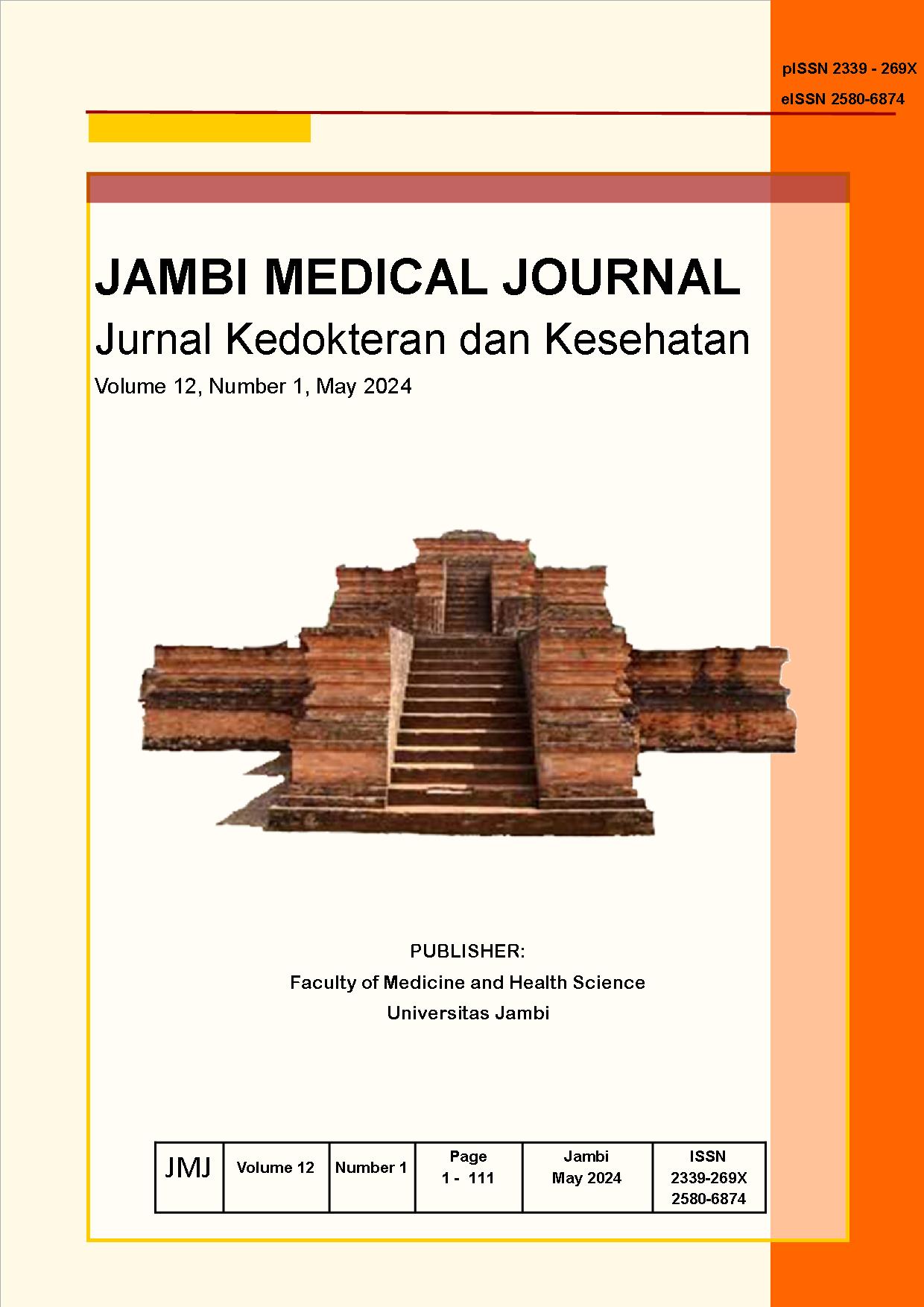ASSOCIATION BETWEEN THE INCIDENCE OF DIARRHEAL DISEASES AND ENVIRONMENTAL RISK FACTORS: A SYSTEMATIC REVIEW
A Systematic Review
DOI:
https://doi.org/10.22437/jmj.v12i1.29418Abstract
Background : Diarrheal disease is the occurrence of feces (bowel movements) whose soft consistency tends to be liquid and occurs more than 3 times a day. The prevalence of diarrhea in Indonesia is 9.8% with 14.5% causing death. Risk factors for diarrhea include food, environmental and human behavior. .
Method : Research design using systematic review method. With the PRISMA (Preferred Reporting Items for Systematic Reviews and Meta Analysis) method through article searches sourced from Google scholar and Pubmed. The inclusion criteria in this writing are original research articles published within the last 5 years, starting from 2018 – 2023.
Results : This study shows that sewage has a close relationship with the incidence of diarrhea (P = 0.001), as well as drinking water sources, especially in terms of water sources, availability of water sources and bacteriological quality of water. Unqualified wastewater disposal conditions are 3.7 times greater risk for diarrhea (PR: 3.7, CI: 1.159 – 11.937), there is a significant relationship between family waste management and diarrhea incidence. In addition to environmental risk factors, there are other factors, namely the level of education of middle and upper middle mothers, exposure to information and family income levels also have a relationship with the incidence of diarrhea in both children and the elderly
Conclusion : Risk factors that have a significant influence on the incidence of diarrhea are environmental factors, exposure to information and family income level. The dominant environmental factors in this study are sewage disposal (latrines), clean water sources/clean water quality, wastewater disposal.
Keywords : diarrhea, environmental factors, personal hygiene, bivariate











